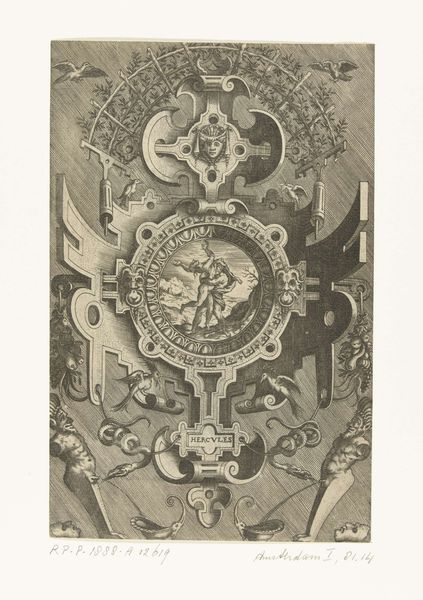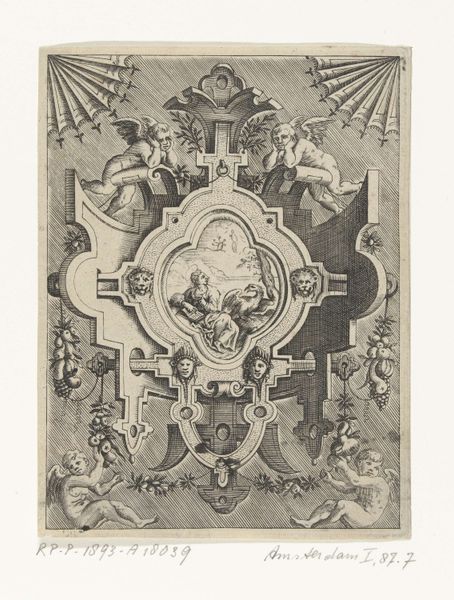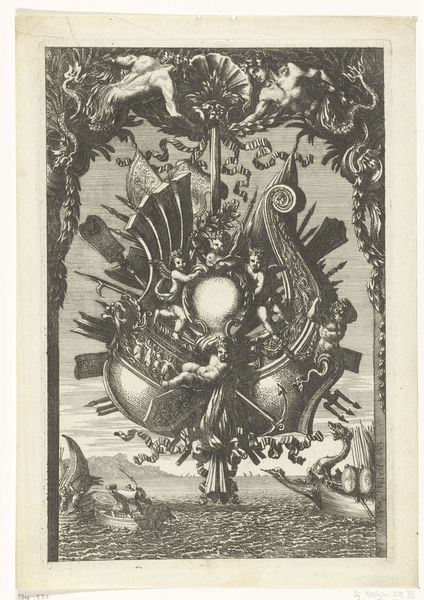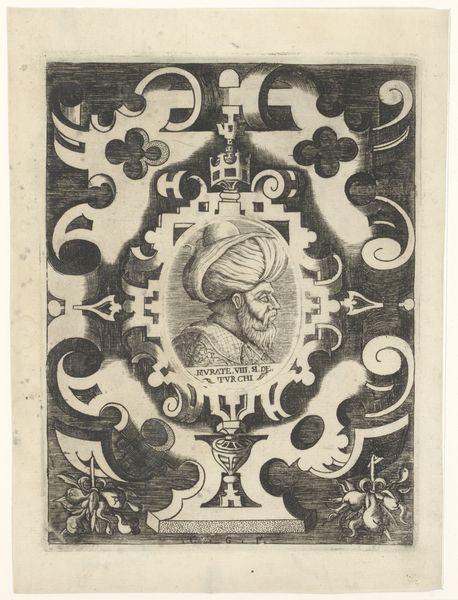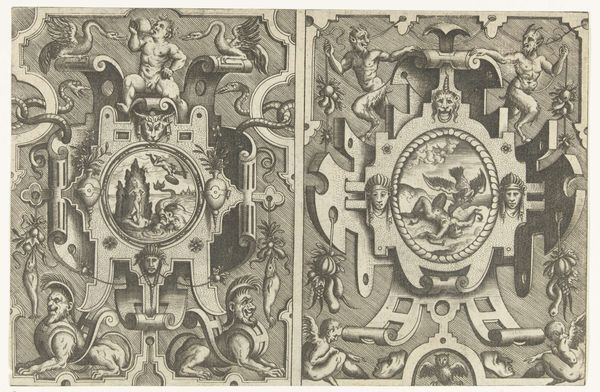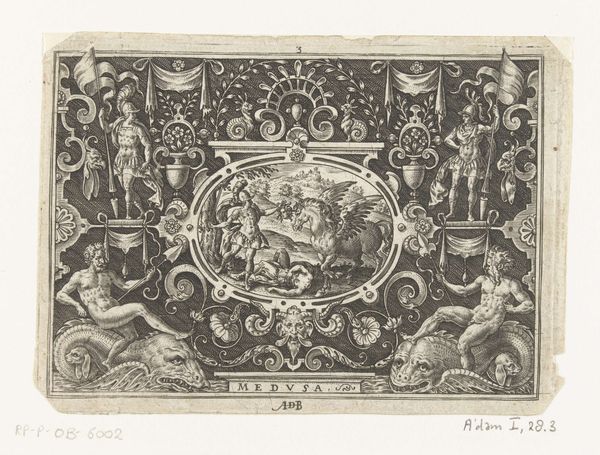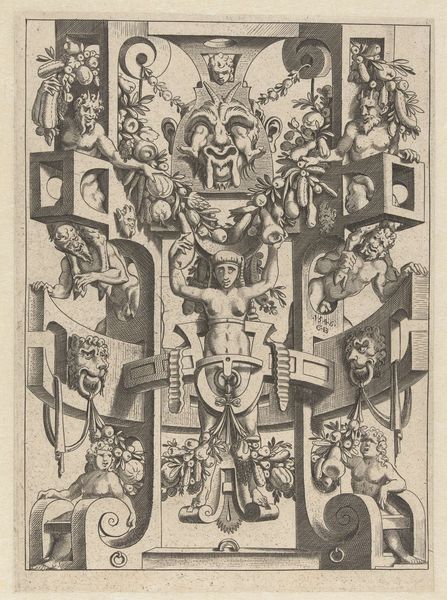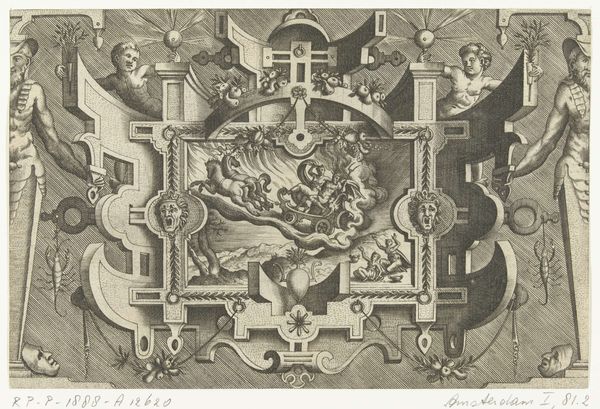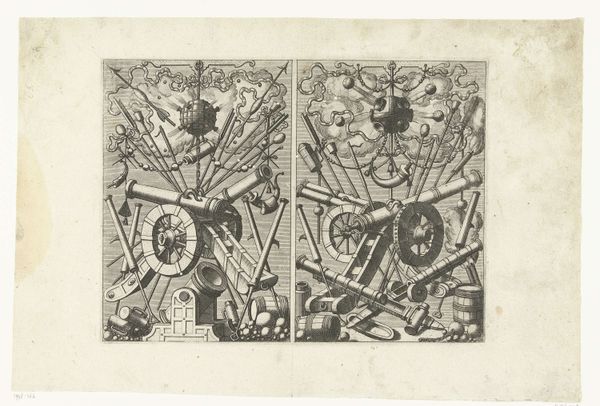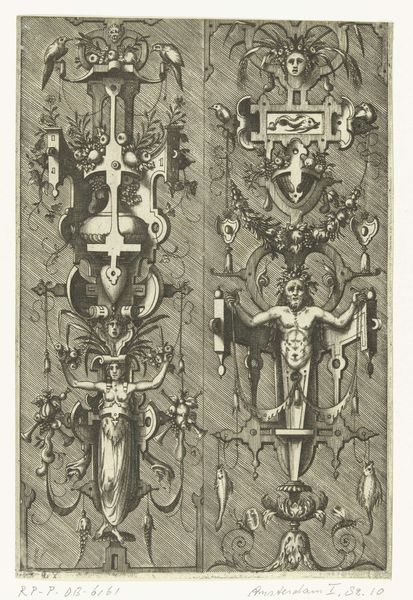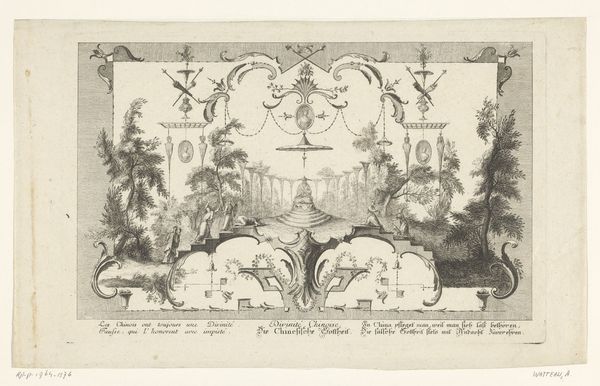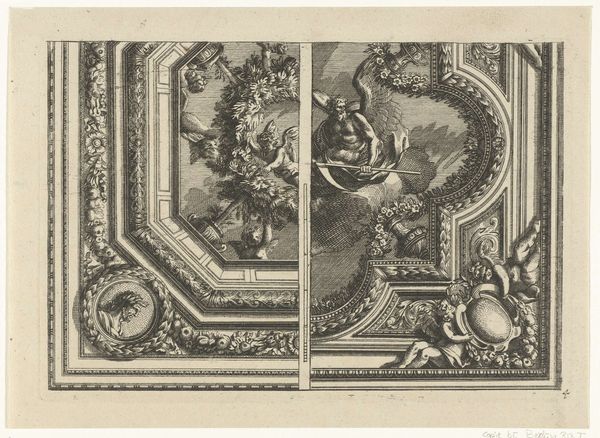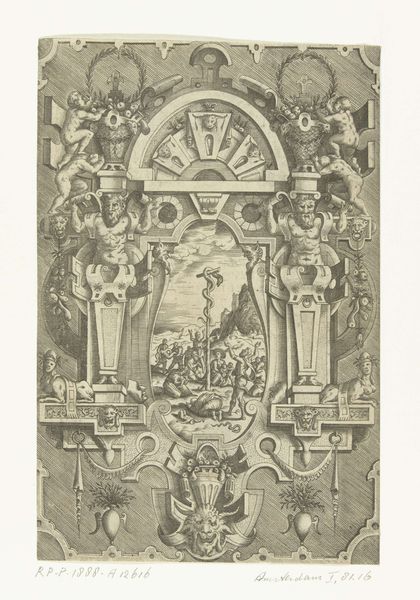
print, engraving
# print
#
pen illustration
#
old engraving style
#
figuration
#
11_renaissance
#
line
#
history-painting
#
northern-renaissance
#
engraving
Dimensions: height 137 mm, width 207 mm
Copyright: Rijks Museum: Open Domain
Pieter van der Heyden created these "Two Evangelists" sometime in the 16th century, using the intaglio printmaking technique of engraving. This process involves meticulously incising lines into a metal plate, which is then inked and pressed onto paper, creating a reversed image. The stark contrast of light and shadow achieved through engraving is critical to the overall effect. Van der Heyden’s skillful application of this method allows for incredibly fine detail, which is then complicated by the symmetry of its composition. The result gives us texture and form, while also imbuing the prints with cultural and artistic significance. Engraving demanded a high degree of skill, combining technical precision with artistic sensibility. It allowed for the relatively quick reproduction of images, playing a crucial role in disseminating ideas, artistic styles, and religious beliefs across Europe. The labor-intensive nature of engraving highlights the value placed on skilled craftsmanship during the Renaissance. Ultimately, understanding the materials, making process, and cultural context deepens our appreciation of this artwork, moving beyond traditional distinctions between fine art and craft.
Comments
No comments
Be the first to comment and join the conversation on the ultimate creative platform.
